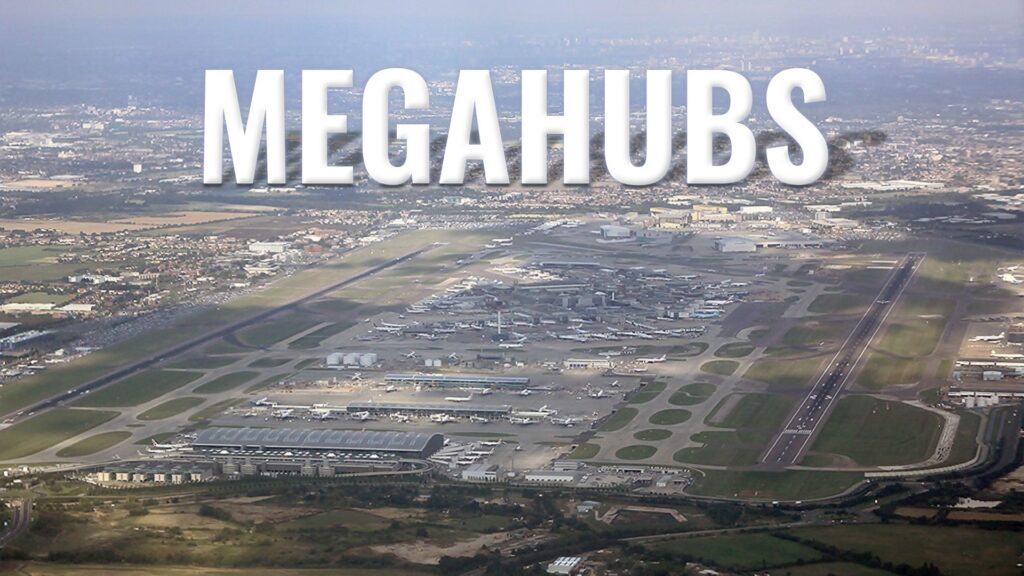
Airports around the globe continue to play a pivotal role in international travel, with a select few dominating global air traffic. According to a recent analysis, the ten largest airline megahubs of 2025 have been identified, showcasing their impact on the aviation landscape. This ranking not only considers total passenger numbers but also the economic influence, airline strategies, and geographic advantages that shape the development of route networks.
Top Ten Airline Megahubs of 2025
Leading the list is London Heathrow Airport (LHR), maintaining its position as the busiest airport in the world. LHR excels in origin-and-destination demand, particularly for long-haul flights. In 2025, the airport boasts a total of 59,240 connections and serves 226 destinations globally. British Airways, with a commanding 51% market share, anchors the oneworld alliance’s presence at the airport, facilitating critical transatlantic connections.
In second place is Istanbul Airport (IST), which has surged from eighth to second. Turkey’s strategic geographic location continues to enhance IST’s role as a superhub, connecting Europe, the Middle East, and beyond. With 82,733 connections and 327 destinations served, Turkish Airlines dominates the airport’s operations, accounting for approximately 79% of all flights.
Third on the list is Amsterdam Schiphol Airport (AMS), reflecting the strength of KLM, which holds a 55% market share. The airport recorded 66,798 connections to 275 destinations, remaining a key gateway between North America, Europe, and Africa despite facing capacity constraints and environmental regulations.
In fourth place, Kuala Lumpur International Airport (KUL) remains a vital connector in Southeast Asia. The airport has a total of 16,159 connections and serves 151 destinations. AirAsia is the largest carrier at this facility, operating around 36% of flights, which supports extensive regional traffic and long-haul links.
Also tied for fourth is Frankfurt Airport (FRA), which has climbed from tenth place in the previous year. Home to Lufthansa, with a 56% market share, FRA supports 73,221 connections to 207 destinations. The airport remains Europe’s leading cargo gateway and a critical hub for intercontinental travel.
Continued Growth and Challenges
Ranked sixth, Seoul Incheon International Airport (ICN) continues to be a premier hub in Northeast Asia. Korean Air, accounting for 22% of flights, has benefited from a merger with Asiana Airlines. ICN facilitates 41,572 connections to 179 destinations, emphasizing efficiency and punctuality as key strengths.
In seventh position, Chicago O’Hare International Airport (ORD) has risen from ninth place, with United Airlines leading the airport’s operations with 49% of flights. O’Hare offers 65,141 connections and services 297 destinations, leveraging its central location in the United States.
“O’Hare’s extensive runway capacity and modernization efforts continue to enhance its appeal as a major gateway,” said an industry analyst.
The eighth-largest hub, Atlanta Hartsfield-Jackson International Airport (ATL), remains essential for Delta Air Lines, which operates approximately 79% of flights. ATL supports 53,374 connections and 251 destinations, ensuring reliability even during adverse weather conditions.
Tokyo Haneda Airport (HND) has slipped to ninth place in 2025, down from third last year. With around 22,243 connections and 107 destinations served, the airport is primarily focused on domestic traffic, although international routes are steadily expanding.
Finally, Paris Charles de Gaulle Airport (CDG) rounds out the list in tenth place after ranking seventh previously. With 57,014 connections to 299 destinations, CDG is a major hub for Air France, which operates 56% of flights. The facility’s rail links enhance its connectivity, though operational disruptions occasionally arise from peak congestion and strikes.
As air travel continues to normalize following global disruptions, these megahubs are adapting by expanding capacities and improving passenger experiences through digitization and enhanced security measures. The competition among these airports is likely to intensify, with strategic developments set to reshape the future of global air travel in the years to come.






